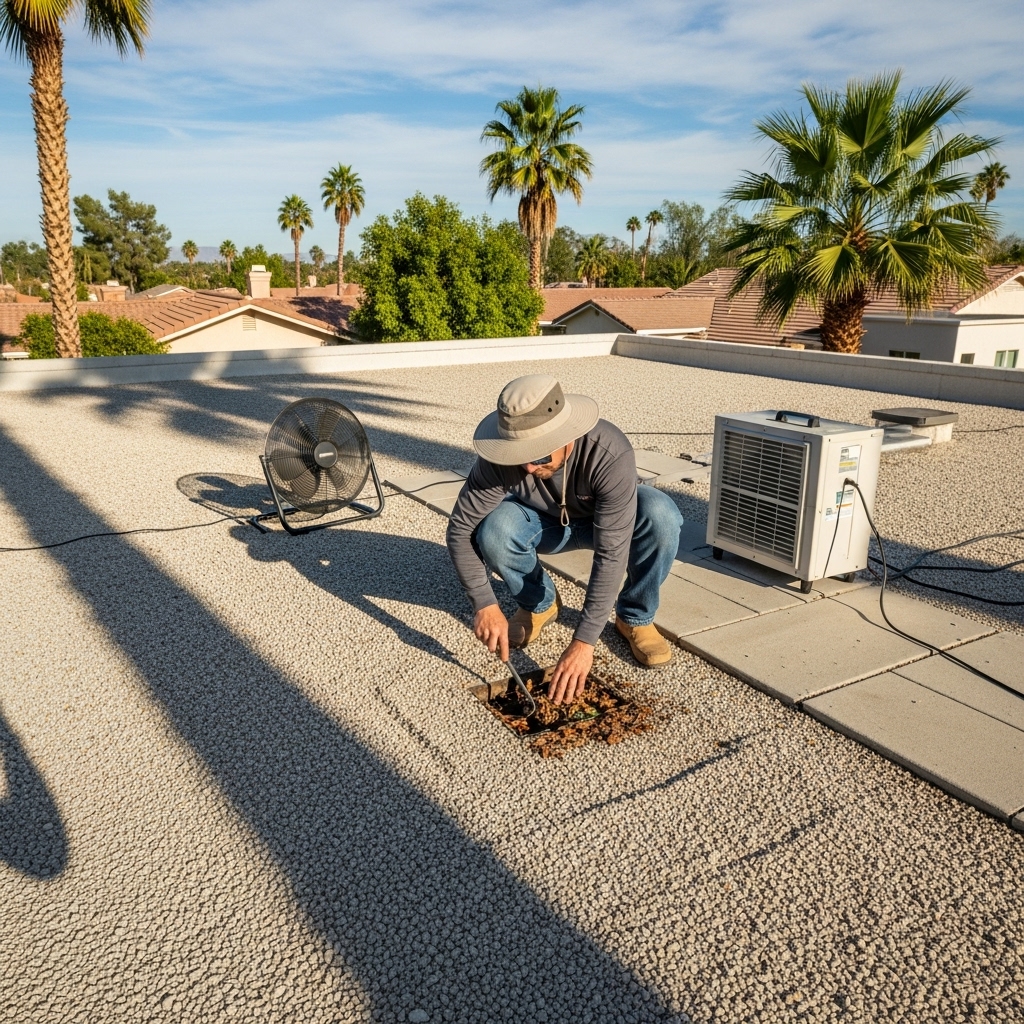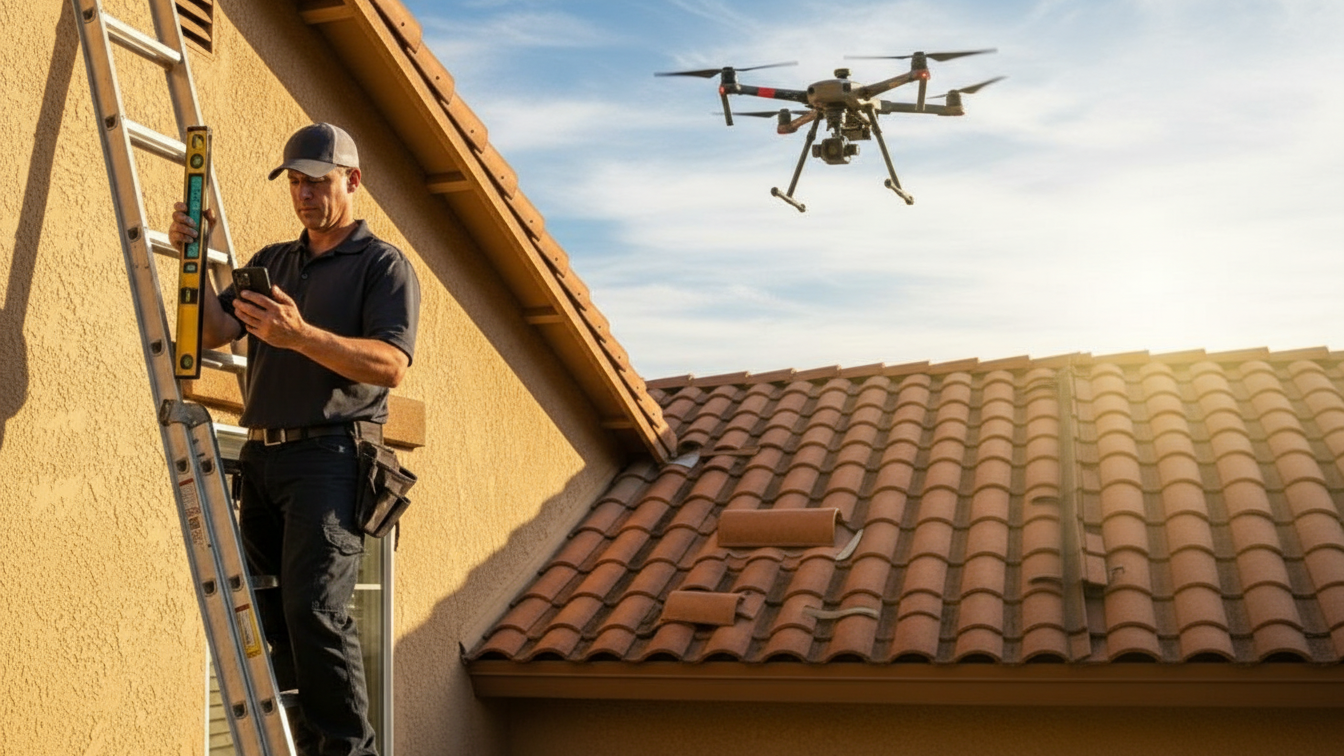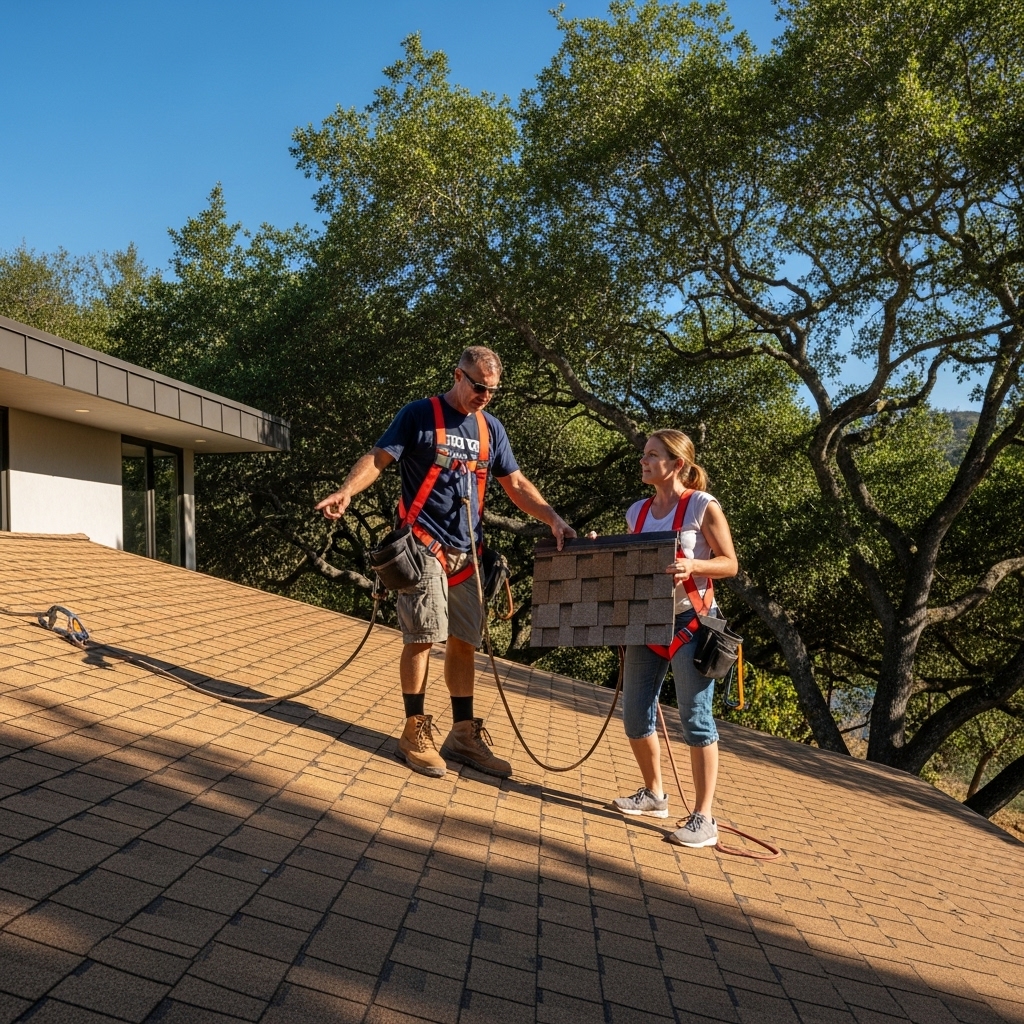Tarzana’s sunshine is part of its charm, but anyone responsible for a flat roof knows that months of heat change how a building breathes, moves, and ages. Maintenance here is not a checklist you dust off once a year; it’s a rhythm that follows the seasons, anticipates heat waves, and respects how UV and thermal cycling affect seams, flashings, and coatings. As a local who has watched rooftop temperatures spike by late morning and felt how membranes soften in the sun then tighten at night, I can say with confidence that the right habits make the difference between a roof that feels predictable and one that surprises you. Good maintenance keeps water out during those rare but serious storms, and it also helps interiors stay comfortable during our long, bright summer stretch. When your maintenance plan supports your existing flat roofing, you extend service life and simplify future decisions.
Flat roofs in Tarzana are as varied as our streetscapes. Many homes carry modified bitumen or built-up systems, sometimes dressed with a reflective coat. Commercial buildings frequently sport single-ply membranes like TPO or PVC, selected for reflectivity and ease of repair. Each system has its own maintenance personality, but the fundamentals remain: keep it clean, keep details tight, and plan small tune-ups before heat and wind magnify small flaws. Maintenance is not glamorous; it is measured in calm summers and uneventful rainy days.
Seasonal Rhythm: Preparing for Heat
Before the first big heat wave, a focused inspection pays off. On modified bitumen and BUR, we look for dried mastic, cracked granule surfaces at traffic paths, and slight lifts near edge metals. On single-plies, we examine heat-welded seams for cleanliness and tension, especially near roof corners where wind and thermal movement combine. If a coating is part of your system, we evaluate reflectivity and check for thin spots or chalking. The goal is to restore elasticity and continuity ahead of the most demanding weather so daytime expansion and nighttime contraction do not pry open small gaps.
Cleaning: The Most Overlooked Task
Dust and pollen can form a fine film that both dulls reflectivity and interferes with adhesion during any touch-up. Clearing debris from drains and scuppers is obvious, but it’s equally important to sweep or gently wash areas where dirt accumulates, like behind HVAC units, near parapets where wind eddies deposit grit, and at low spots after a rare shower. A clean surface lets you see the roof’s true condition and ensures that any repairs bond well. Choose cooler hours for cleaning; surfaces are more forgiving early in the day.
Detail Discipline Around Penetrations
Penetrations—HVAC curbs, vent stacks, conduit supports—carry much of the maintenance workload. Vibrations and temperature swings can fatigue sealants and flashings. During summer maintenance, we reinforce small cracks with compatible mastics and, where appropriate, embedded fabric. On single-ply systems, we solvent clean and heat-weld patches at corners that show strain. It’s careful work that pays off during both heat surges and the season’s first downpour.
Managing Foot Traffic and Equipment
Service technicians rightly visit rooftops to maintain HVAC and other systems, but every footstep and tool creates wear. Defining walk paths and installing protection pads near high-traffic equipment helps prevent abrasion, especially on single-plies. Remind vendors to avoid dragging tools and to report anything they notice, such as a loose edge or a damaged base flange. Little bits of awareness multiplied over a summer prevent the classic “mystery scuff” that becomes a leak months later.
Drainage Review Before and After Wind Events
Our breezy days, especially during Santa Ana conditions, stir up debris that can settle in corners and around drains. A quick check after windy spells, even in dry weather, keeps water moving when the unexpected shower arrives. Look for misaligned strainers, leaves lodged behind scuppers, and silt buildup in low spots. Adjusting these small details now avoids ponding that stresses the roof later.
Reflectivity and Interior Comfort
Reflective surfaces reduce rooftop temperatures, which can translate to comfort inside and less load on cooling systems. During maintenance, we assess the condition of reflective layers, noting where they have thinned or dulled. In some cases, a strategic touch-up or planned future coating can restore performance. The key is to ensure the underlying surface is ready—clean, bonded, and detailed—so that any enhancement becomes a true upgrade.
Mid-Summer Check: Catching Movement Early
Halfway through the hot season, a brief follow-up inspection can catch details that changed under sustained heat. Mastics that looked fine in spring might reveal hairline cracks by July. Seams near corners can show tension lines. Rechecking and tightening these areas mid-season is an efficient way to keep the roof resilient without major intervention. It’s also a good time to revisit future plans for your flat roofing, aligning maintenance with any anticipated upgrades.
Edge Metals and Parapets
Perimeter conditions define how a flat roof fares during wind and thermal expansion. We check for loose coping joints, exposed fasteners, and sealant that has separated. A small reset now prevents edge-lift that could unseat membrane terminations. On stucco parapets, hairline cracks just above base flashings invite water entry during storms; sealing these proactively keeps the flashing line honest.
Plan for Equipment Changes
Summer is often when building owners add or swap rooftop equipment. Integrating new penetrations cleanly protects the roof’s continuity. Pre-planning allows us to stage compatible flashing materials and ensure support stands or sleepers don’t rub. When equipment shifts without coordination, it usually leaves scuffs or cut corners that become vulnerabilities later. A quick coordination call prevents a season’s worth of headaches.
Documentation: Your Roof’s Memory
Photos and notes from each maintenance visit build a record that helps everyone. When a stain appears on a ceiling months later, you can compare it with images of nearby details. If a section is due for a future coating, you will know which areas already received reinforcement. Documentation ties together observations from one season to the next so maintenance stays targeted and efficient.
Frequently Asked Questions
How often should I inspect a flat roof during Tarzana’s hot season?
Plan for a thorough inspection before the first heat wave and a shorter mid-summer check. Additional quick looks after high winds help keep drains clear and catch small shifts in seams or sealants.
What maintenance tasks offer the biggest return?
Keeping drains and scuppers clear, reinforcing small flashing cracks, and protecting high-traffic zones provide outsized benefits. Cleanliness and attention to details around penetrations are the cornerstones of a calm roof.
Will reflective maintenance make interiors cooler?
Maintaining reflective surfaces helps reduce roof temperatures. While comfort gains depend on insulation and usage, a bright, intact surface eases strain on cooling systems during peak heat.
Should I avoid roof work during midday heat?
Yes. Early mornings are best for cleaning and adhesion-sensitive tasks. Materials handle better when surfaces are cooler and dust is lower, leading to stronger, cleaner results.
Can I walk on my roof for simple maintenance?
Limited, careful foot traffic is fine on most systems, especially when you use defined paths and wear soft-soled shoes. Avoid dragging equipment and step lightly around seams and edges.
How do I prepare for a future coating while maintaining my roof?
Focus on compatibility. Use patch materials and mastics that will accept the intended topcoat, keep surfaces clean, and reinforce critical details. Good maintenance lays the groundwork for a successful coating later.
What should I watch after service technicians visit the roof?
Check for displaced protection pads, scuffs near equipment, and any small cuts or punctures. Addressing these quickly prevents minor damage from becoming leaks.
Ready to Tune Up Your Tarzana Flat Roof
If you want a roof that handles our hot summers gracefully and remains calm during the occasional storm, let’s plan a maintenance visit. We will walk the surface, clear trouble spots, and tighten the details that matter most. With a rhythm tuned to our local climate and a focus on longevity, you can enjoy a predictable, reliable rooftop season after season. For practical guidance and service that fits your building’s needs, reach out today and explore how attentive care supports strong, efficient flat roofing performance.






